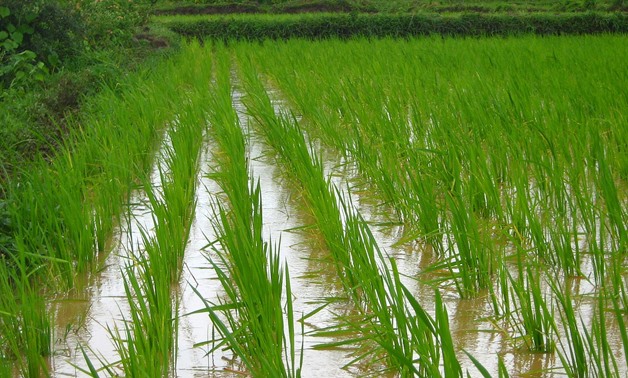
Caption: Rice cultivating- CC via Max Pixel
CAIRO – 11 July 2018: The decision to import rice aims at controlling the market and preventing the prices hike, Head of Rice division of the Federation of Industries Ragab Shehata said.
Shehata clarified that importing rice does not mean that the local market is in need of the product as the rice crop which is scheduled to be harvested in the second half of July, will cover 90 percent of the local market requirements.
He pointed out that the scheduled rice harvest is expected to reach about 4 million tons of barely rice and over 500,000 tons of barely rice will be imported to produce about 300,000 tons of white rice.
“There are several countries to import rice from, including Thailand, India, Russia, the United States and Argentina,” the head of rice division stated.
He also noted that the companies began to communicate with the Ministry of Agriculture to obtain import approvals.
President Abdel Fatah al-Sisi approved Sunday to import rice and to start its marketing for the coming year, and to set suitable prices for the crop in cooperation with the Ministry of Agriculture.
On June 5, the government announced its plan to import rice (paddy, mulled and cargo rice), in a way to reduce the rice-cultivated areas due to the water shortage crisis the country is suffering from.
President Sisi ratified on May 21, the newly-passed amendments to the Agriculture Law No. 53 of 1966, per which the government will determine the areas to cultivate certain water-intensive crops such as rice and sugarcane, amid the water shortage crisis in order to rationalize water usage.
Also, Article 101 of the law stipulates that those who violate the ministerial decrees issued to implement Articles 1, 2, 3, and 4 of the Agriculture Law shall be punished with a fine not less than LE 20,000 (about $1,119) and not more than LE 50,000.
On May 2, the Egyptian government agreed to increase the area allocated for rice cultivation by 100,000 feddans (one feddan equals 1.038 acres) for this season only, bringing the total area allocated for rice cultivation to 820,000 feddans, Abdel Latif Khaled, head of irrigation sector in the Ministry of Irrigation and Water Resources stated.
Thus, it is expected that Egypt will produce about 3.3 million tons this year as one feddan produces 4 tons, while Egypt's annual consumption of rice is estimated at 4.3 million tons.
However, the cultivated areas will be shrunk in the coming seasons as a result of water scarcity, given that one feddan of rice consumes 7,000 cubic meters of water.
Egypt needs at least 105 billion cubic meters of water annually to cover the needs of more than 90 million citizens. However, it currently has only 60 billion cubic meters, 55.5 billion cubic meters of which come from the Nile and less than 5 billion cubic meters come from non-renewable subterranean water in the desert. The remaining 80 billion cubic meters are covered by the reuse of wastewater.
The average per capita consumption of fresh water declined by 1.5 percent in 2015/2016 as it reached 103.4 cubic meters, compared to 105 cubic meters in 2015/2014, according to the Central Agency for Public Mobilization and Statistics (CAPMAS) data.
A further decrease in Egypt's water resources is expected in light of the construction of the Grand Ethiopian Renaissance Dam (GERD), which could have a negative impact on Egypt’s Nile water share.
Egypt was the largest rice producer in the Near East region, according to the FAO data in 2004. In the period between 2015 and 2016, the country exported rice with a revenue of $58 million. However, rice export was banned in August 2016 to meet the local demand after shrinking the cultivated areas.
Additional Reporting: Samar Samir

Comments
Leave a Comment